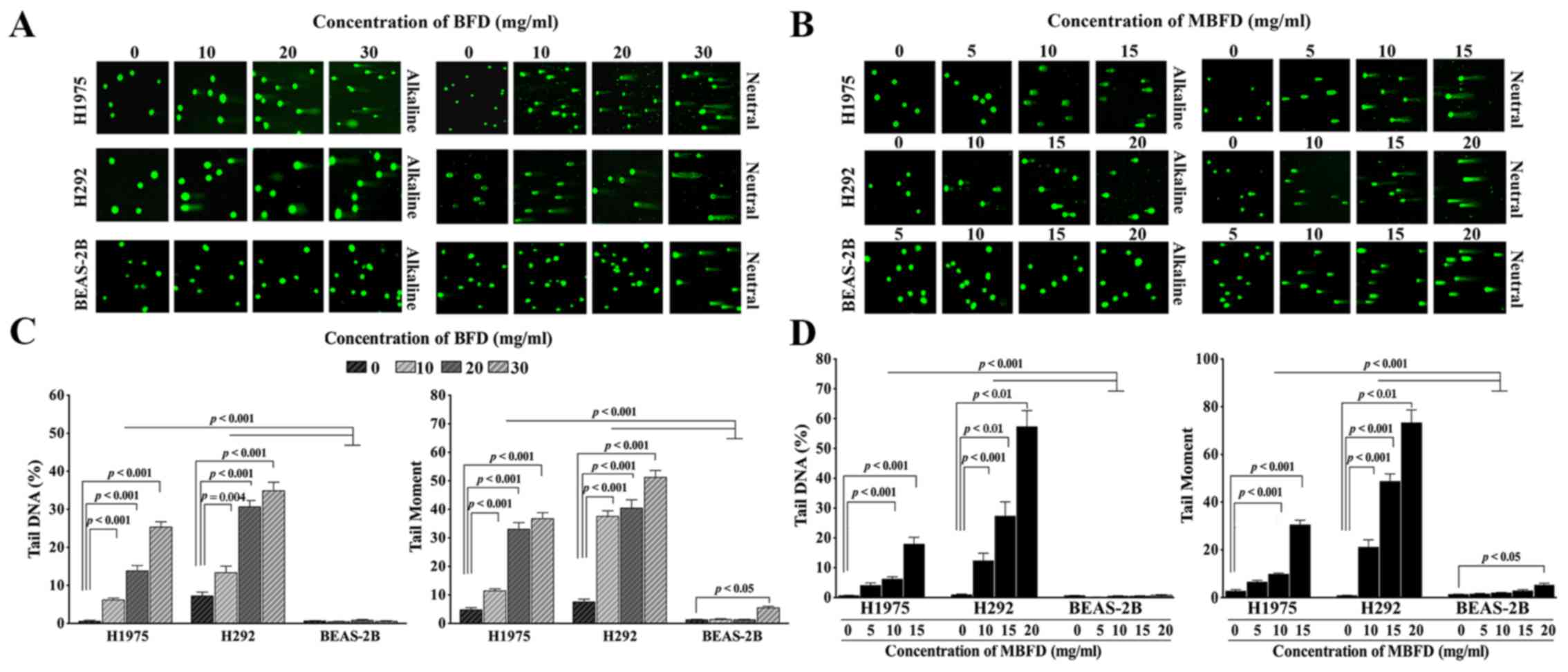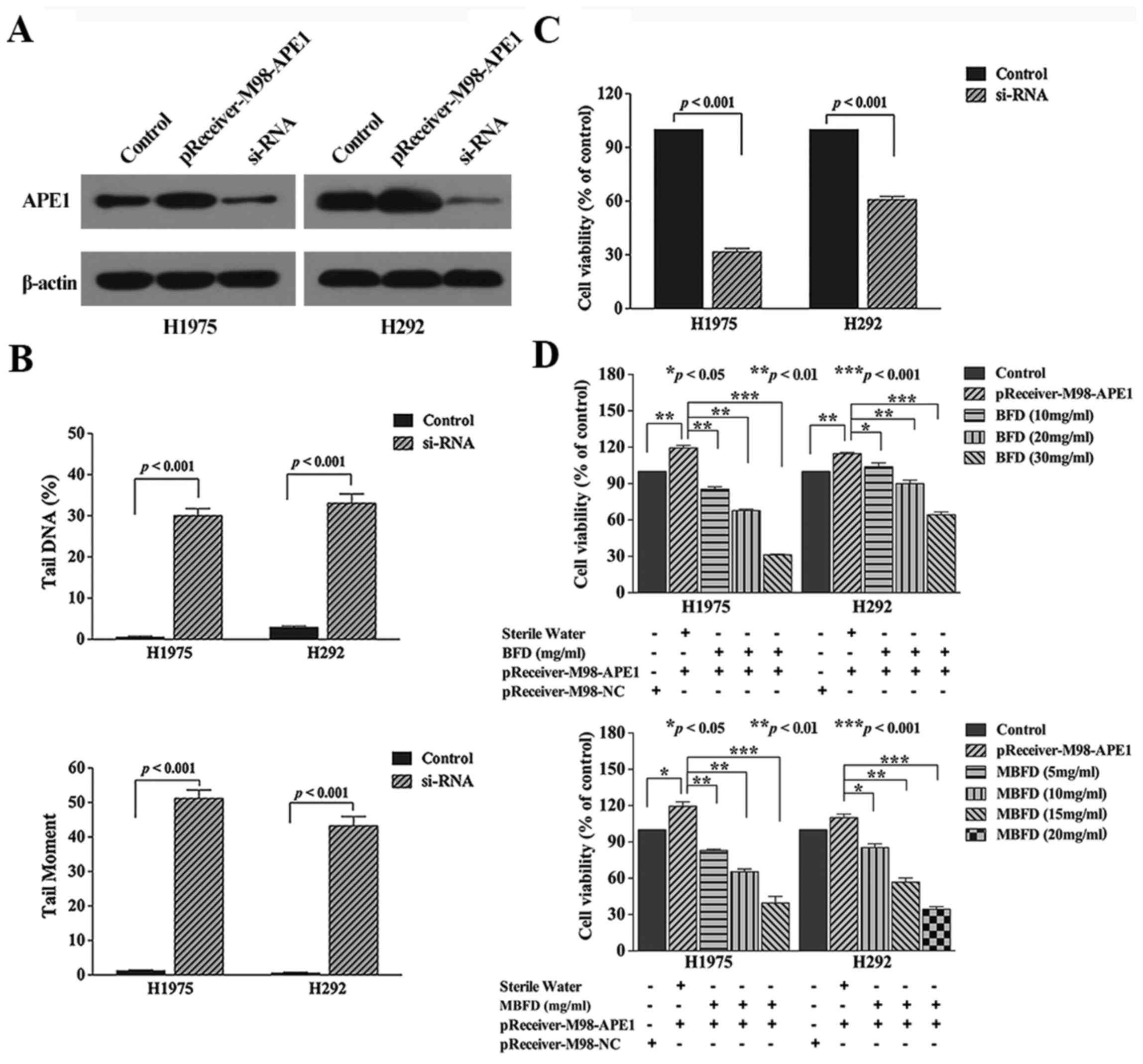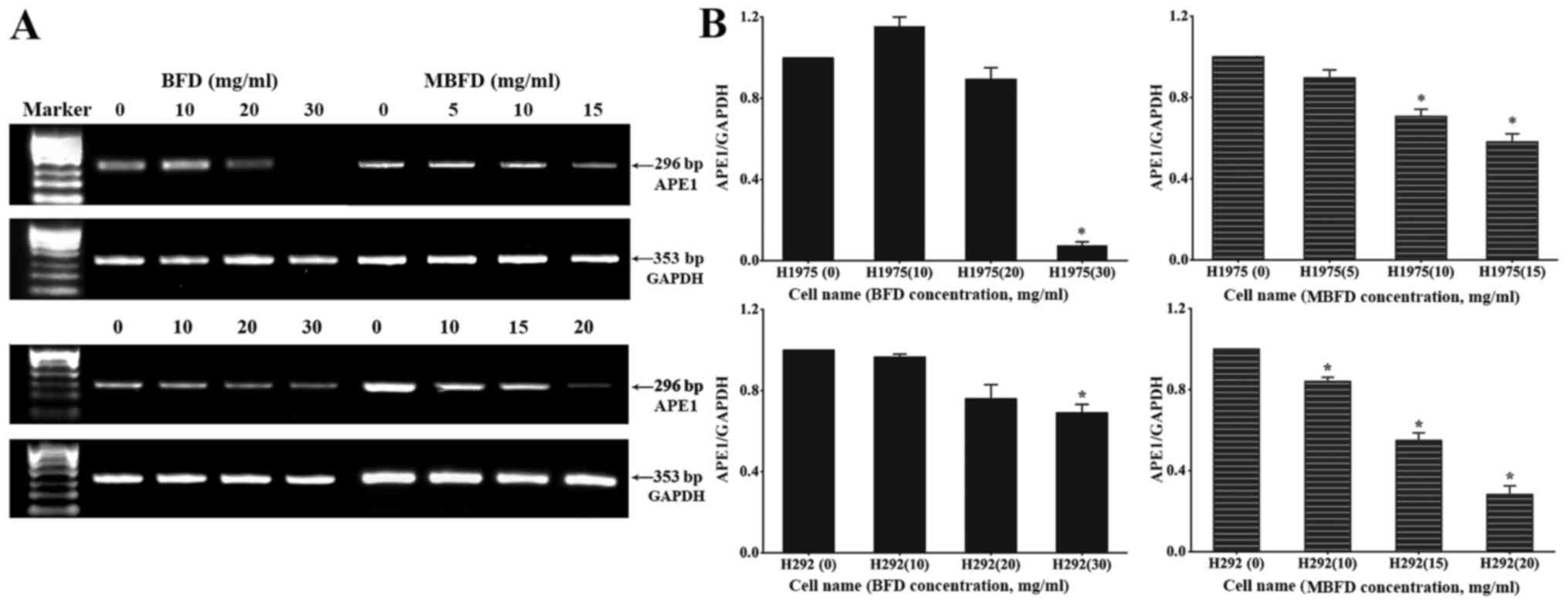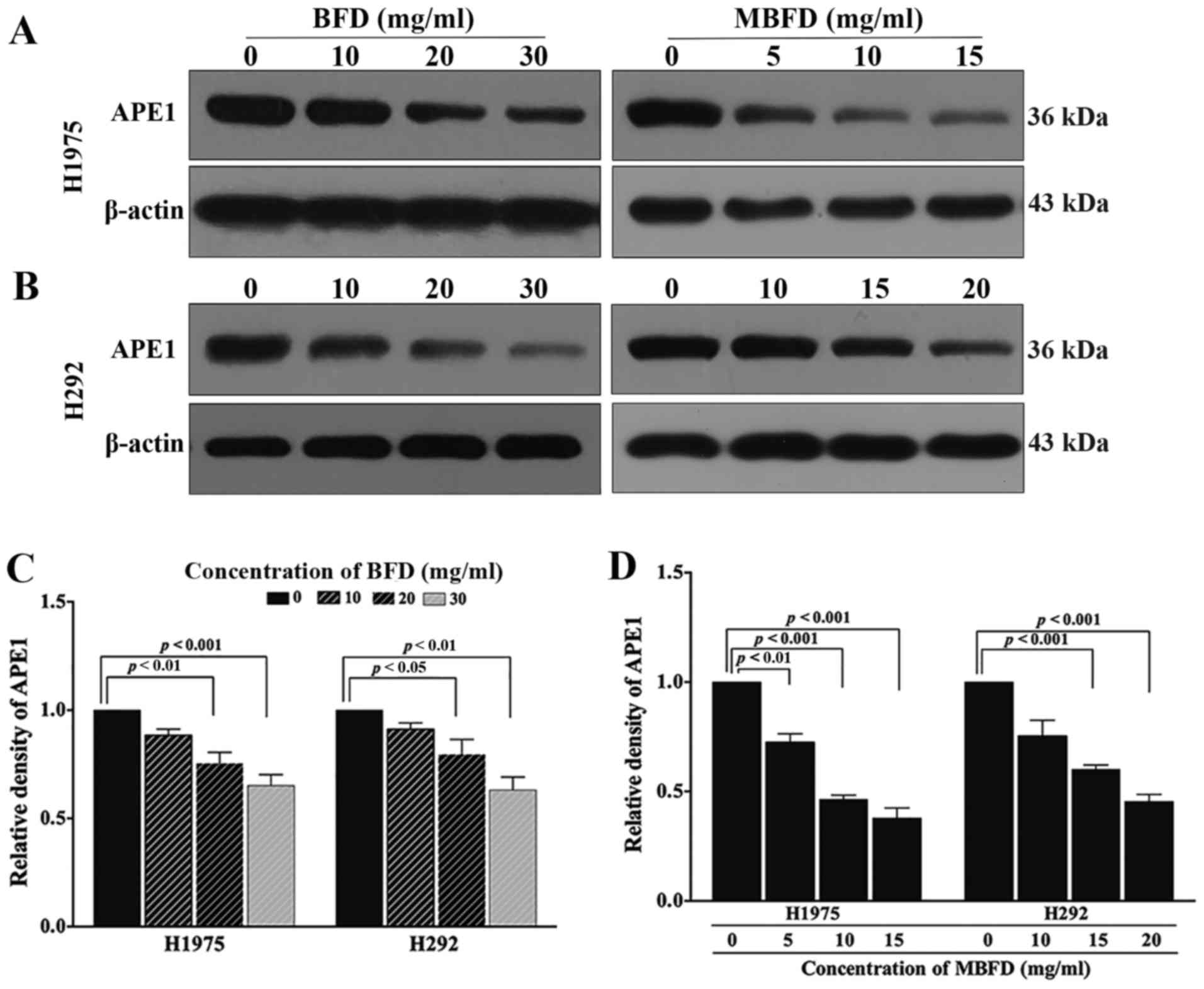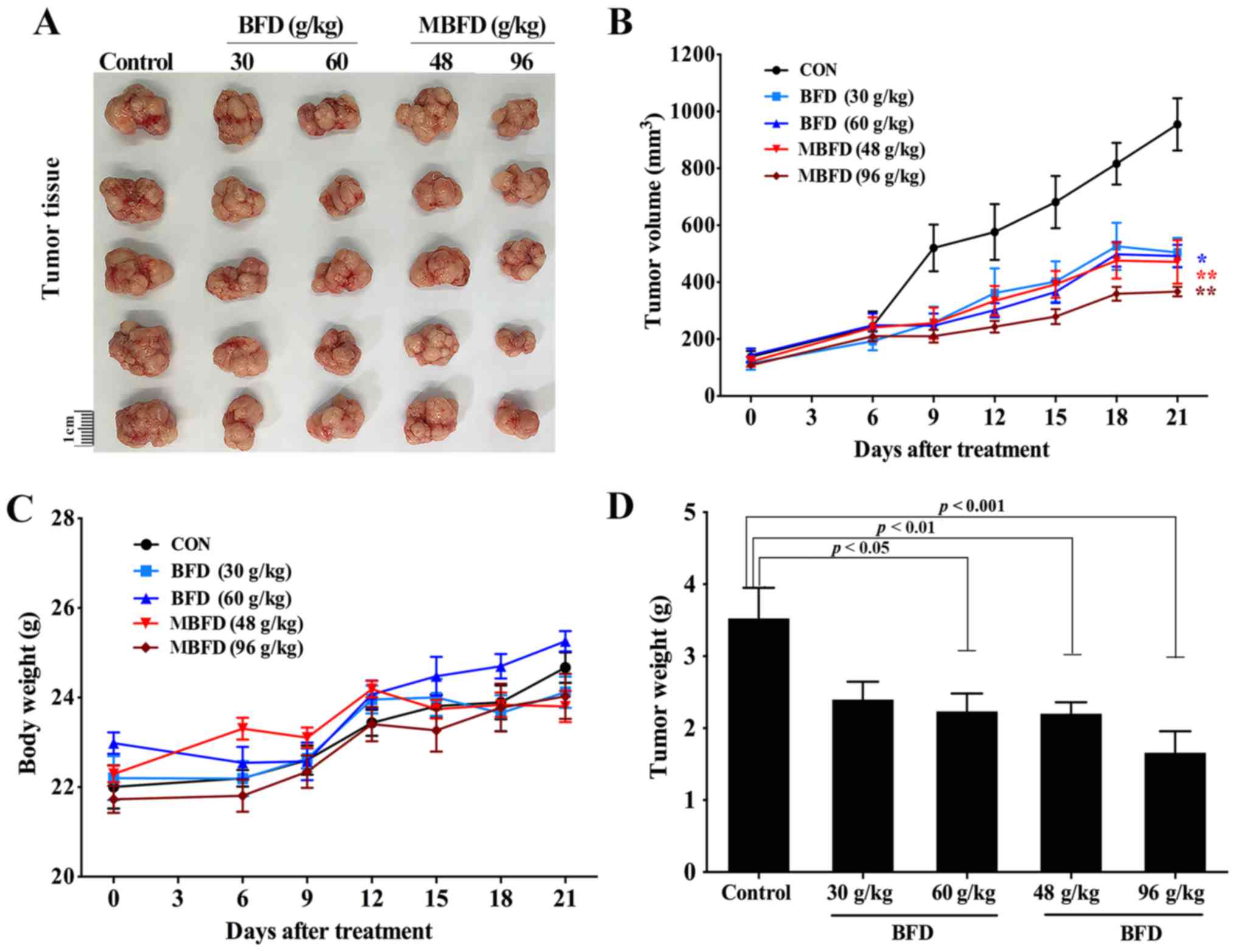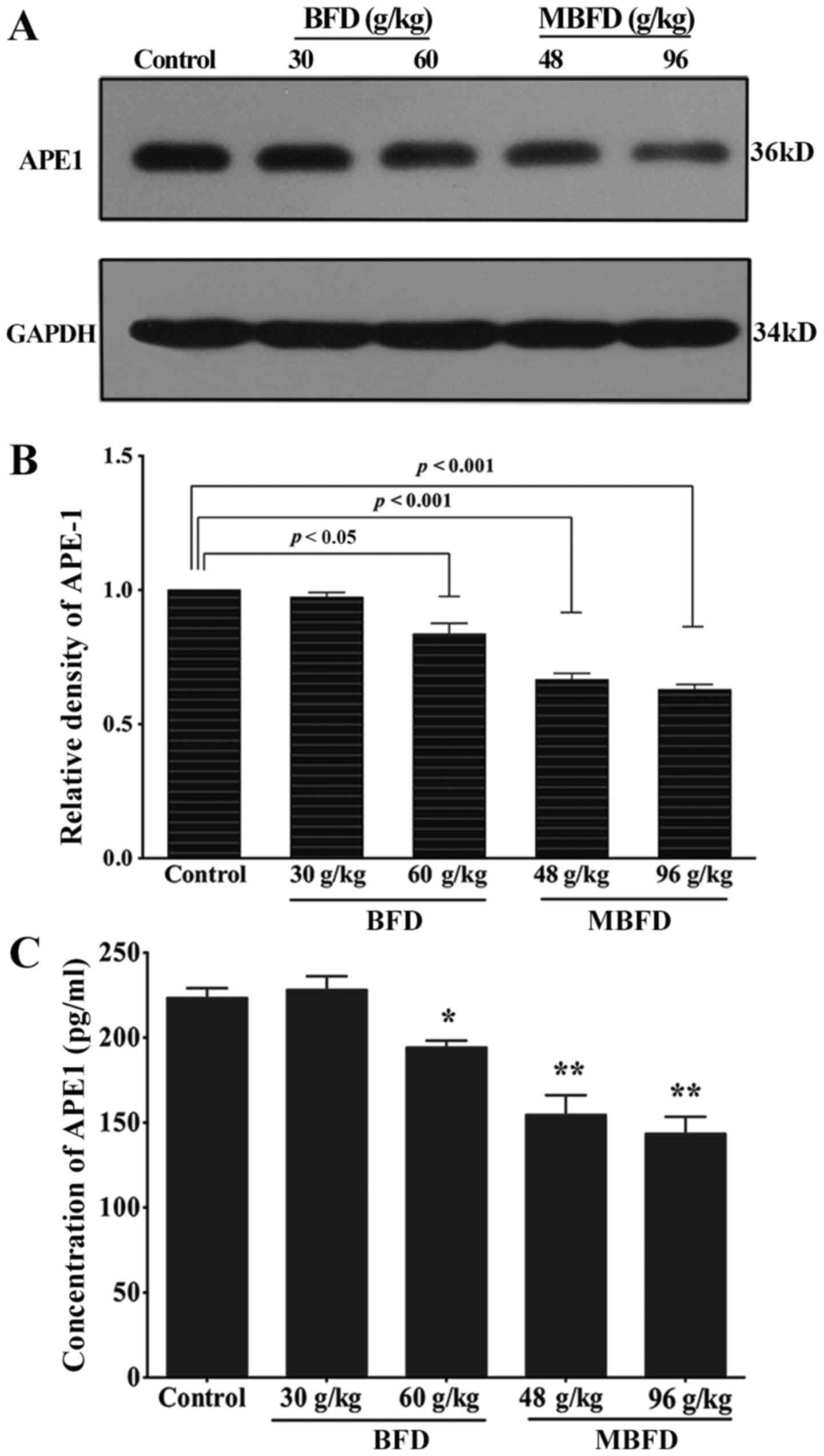|
1
|
Kastan MB: DNA damage responses:
mechanisms and roles in human disease: 2007 G.H.A. Clowes Memorial
Award Lecture. Mol Cancer Res. 6:517–524. 2008. View Article : Google Scholar : PubMed/NCBI
|
|
2
|
Rodriguez-Rocha H, Garcia-Garcia A,
Panayiotidis MI and Franco R: DNA damage and autophagy. Mutat Res.
711:158–166. 2011. View Article : Google Scholar : PubMed/NCBI
|
|
3
|
Altieri F, Grillo C, Maceroni M and
Chichiarelli S: DNA damage and repair: from molecular mechanisms to
health implications. Antioxid Redox Signal. 10:891–937. 2008.
View Article : Google Scholar : PubMed/NCBI
|
|
4
|
Christmann M, Tomicic MT, Roos WP and
Kaina B: Mechanisms of human DNA repair: An update. Toxicology.
193:3–34. 2003. View Article : Google Scholar : PubMed/NCBI
|
|
5
|
Roos WP, Thomas AD and Kaina B: DNA damage
and the balance between survival and death in cancer biology. Nat
Rev Cancer. 16:20–33. 2016. View Article : Google Scholar
|
|
6
|
Wilson DM III and Bohr VA: The mechanics
of base excision repair, and its relationship to aging and disease.
DNA Repair (Amst). 6:544–559. 2007. View Article : Google Scholar
|
|
7
|
Bhakat KK, Mantha AK and Mitra S:
Transcriptional regulatory functions of mammalian AP-endonuclease
(APE1/Ref-1), an essential multifunctional protein. Antioxid Redox
Signal. 11:621–638. 2009. View Article : Google Scholar
|
|
8
|
Li M and Wilson DM III: Human
apurinic/apyrimidinic endonuclease 1. Antioxid Redox Signal.
20:678–707. 2014. View Article : Google Scholar :
|
|
9
|
Wood RD, Mitchell M, Sgouros J and Lindahl
T: Human DNA repair genes. Science. 291:1284–1289. 2001. View Article : Google Scholar : PubMed/NCBI
|
|
10
|
Luo M, He H, Kelley MR and Georgiadis MM:
Redox regulation of DNA repair: implications for human health and
cancer therapeutic development. Antioxid Redox Signal.
12:1247–1269. 2010. View Article : Google Scholar :
|
|
11
|
Robertson KA, Bullock HA, Xu Y, Tritt R,
Zimmerman E, Ulbright TM, Foster RS, Einhorn LH and Kelley MR:
Altered expression of Ape1/ref-1 in germ cell tumors and
overexpression in NT2 cells confers resistance to bleomycin and
radiation. Cancer Res. 61:2220–2225. 2001.PubMed/NCBI
|
|
12
|
Wang D, Xiang DB, Yang XQ, Chen LS, Li MX,
Zhong ZY and Zhang YS: APE1 overexpression is associated with
cisplatin resistance in non-small cell lung cancer and targeted
inhibition of APE1 enhances the activity of cisplatin in A549
cells. Lung Cancer. 66:298–304. 2009. View Article : Google Scholar : PubMed/NCBI
|
|
13
|
Di Maso V, Avellini C, Crocè LS, Rosso N,
Quadrifoglio F, Cesaratto L, Codarin E, Bedogni G, Beltrami CA,
Tell G, et al: Subcellular localization of APE1/Ref-1 in human
hepatocellular carcinoma: Possible prognostic significance. Mol
Med. 13:89–96. 2007. View Article : Google Scholar : PubMed/NCBI
|
|
14
|
Kakolyris S, Kaklamanis L, Engels K, Fox
SB, Taylor M, Hickson ID, Gatter KC and Harris AL: Human AP
endonuclease 1 (HAP1) protein expression in breast cancer
correlates with lymph node status and angiogenesis. Br J Cancer.
77:1169–1173. 1998. View Article : Google Scholar : PubMed/NCBI
|
|
15
|
Mahjabeen I, Ali K and Zhouxand Kayani MA:
Deregulation of base excision repair gene expression and enhanced
proliferation in head and neck squamous cell carcinoma. Tumour
Biol. 35:5971–5983. 2014. View Article : Google Scholar : PubMed/NCBI
|
|
16
|
Poletto M, Di Loreto C, Marasco D, Poletto
E, Puglisi F, Damante G and Tell G: Acetylation on critical lysine
residues of Apurinic/apyrimidinic endonuclease 1 (APE1) in triple
negative breast cancers. Biochem Biophys Res Commun. 424:34–39.
2012. View Article : Google Scholar : PubMed/NCBI
|
|
17
|
Qing Y, Li Q, Ren T, Xia W, Peng Y, Liu
GL, Luo H, Yang YX, Dai XY, Zhou SF, et al: Upregulation of PD-L1
and APE1 is associated with tumorigenesis and poor prognosis of
gastric cancer. Drug Des Devel Ther. 9:901–909. 2015. View Article : Google Scholar : PubMed/NCBI
|
|
18
|
Qing Y, Wang D, Lei X, Xiang DB, Li MX, Li
ZP and Shan JL: The expression of APE1 and its correlation with
prognostic significance after 252Cf radiotherapy in cervical
cancer. Sichuan Da Xue Xue Bao Yi Xue Ban. 40:125–128. 2009.In
Chinese. PubMed/NCBI
|
|
19
|
Sheng Q, Zhang Y, Wang R, Zhang J, Chen B,
Wang J, Zhang W and Xin X: Prognostic significance of APE1
cytoplasmic localization in human epithelial ovarian cancer. Med
Oncol. 29:1265–1271. 2012. View Article : Google Scholar
|
|
20
|
Tell G, Damante G, Caldwell D and Kelley
MR: The intracellular localization of APE1/Ref-1: more than a
passive phenomenon? Antioxid Redox Signal. 7:367–384. 2005.
View Article : Google Scholar : PubMed/NCBI
|
|
21
|
Chantre-Justino M, Alves G, Britto C,
Cardoso A, Scherrer L, Moreira Ados S, Quirino R, Ornellas A,
Leitão A and Lage C: Impact of reduced levels of APE1 transcripts
on the survival of patients with urothelial carcinoma of the
bladder. Oncol Rep. 34:1667–1674. 2015. View Article : Google Scholar : PubMed/NCBI
|
|
22
|
Jiang Y, Zhou S, Sandusky GE, Kelley MR
and Fishel ML: Reduced expression of DNA repair and redox signaling
protein APE1/Ref-1 impairs human pancreatic cancer cell survival,
proliferation, and cell cycle progression. Cancer Invest.
28:885–895. 2010. View Article : Google Scholar : PubMed/NCBI
|
|
23
|
Dai N, Cao XJ, Li MX, Qing Y, Liao L, Lu
XF, Zhang SH, Li Z, Yang YX and Wang D: Serum APE1 autoantibodies:
A novel potential tumor marker and predictor of chemotherapeutic
efficacy in non-small cell lung cancer. PLoS One. 8:e580012013.
View Article : Google Scholar : PubMed/NCBI
|
|
24
|
Torre LA, Bray F, Siegel RL, Ferlay J,
Lortet-Tieulent J and Jemal A: Global cancer statistics, 2012. CA
Cancer J Clin. 65:87–108. 2015. View Article : Google Scholar : PubMed/NCBI
|
|
25
|
Chen W, Zheng R, Baade PD, Zhang S, Zeng
H, Bray F, Jemal A, Yu XQ and He J: Cancer statistics in China,
2015. CA Cancer J Clin. 66:115–132. 2016. View Article : Google Scholar : PubMed/NCBI
|
|
26
|
Siegel RL, Miller KD and Jemal A: Cancer
statistics, 2016. CA Cancer J Clin. 66:7–30. 2016. View Article : Google Scholar : PubMed/NCBI
|
|
27
|
Mok TS, Wu YL, Thongprasert S, Yang CH,
Chu DT, Saijo N, Sunpaweravong P, Han B, Margono B, Ichinose Y, et
al: Gefitinib or carboplatin-paclitaxel in pulmonary
adenocarcinoma. N Engl J Med. 361:947–957. 2009. View Article : Google Scholar : PubMed/NCBI
|
|
28
|
Socinski MA, Bondarenko I, Karaseva NA,
Makhson AM, Vynnychenko I, Okamoto I, Hon JK, Hirsh V, Bhar P,
Zhang H, et al: Weekly nab-paclitaxel in combination with
carboplatin versus solvent-based paclitaxel plus carboplatin as
first-line therapy in patients with advanced non-small-cell lung
cancer: Final results of a phase III trial. J Clin Oncol.
30:2055–2062. 2012. View Article : Google Scholar : PubMed/NCBI
|
|
29
|
Solomon BJ, Mok T, Kim DW, Wu YL, Nakagawa
K, Mekhail T, Felip E, Cappuzzo F, Paolini J, Usari T, et al
PROFILE 1014 Investigators: First-line crizotinib versus
chemotherapy in ALK-positive lung cancer. N Engl J Med.
371:2167–2177. 2014. View Article : Google Scholar : PubMed/NCBI
|
|
30
|
National Comprehensive Cancer Network
(NCCN): NCCN Clinical Practice Guidelines in Oncology (NCCN
Guidelines®). Non-Small Cell Lung Cancer. https://www.nccn.org/professionals/physician_gls/PDF/nscl.pdf.
|
|
31
|
Piao BK, Tang WX, Zhang ZQ, Lin HS, Duan
FW and Yu GQ: The observation of Feiliuping ointment treatment of
advanced lung cancer-with 339 cases of clinical analysis. J Tradit
Chin Med. 21–23. 1991.
|
|
32
|
Li PW, Zhang DZ and Hao YX: Clinical
analysis of Ping-Fei decoction treatment of 109 cases of non-small
cell lung cancer. J Tradit Chin Med. 87–88. 1995.
|
|
33
|
Yang GW, Wang XM, Han D, et al: Study on
TCM comprehensive therapy in treatment of advanced Non-Small Cell
Lung Cancer. Zhong Guo Zhong Yi Yao Xin Xi Za Zhi. 12:11–13.
2005.In Chinese.
|
|
34
|
Han Y, Wang H, Xu W, Cao B, Han L, Jia L,
Xu Y, Zhang Q, Wang X, Zhang G, et al: Chinese herbal medicine as
maintenance therapy for improving the quality of life for advanced
non-small cell lung cancer patients. Complement Ther Med. 24:81–89.
2016. View Article : Google Scholar : PubMed/NCBI
|
|
35
|
Jiang Y, Liu LS, Shen LP, Han ZF, Jian H,
Liu JX, Xu L, Li HG, Tian JH and Mao ZJ: Traditional Chinese
Medicine treatment as maintenance therapy in advanced
non-small-cell lung cancer: A randomized controlled trial.
Complement Ther Med. 24:55–62. 2016. View Article : Google Scholar : PubMed/NCBI
|
|
36
|
Li W, Chen C, Saud SM, Geng L, Zhang G,
Liu R and Hua B: Fei-Liu-Ping ointment inhibits lung cancer growth
and invasion by suppressing tumor inflammatory microenvironment.
BMC Complement Altern Med. 14:1532014. View Article : Google Scholar : PubMed/NCBI
|
|
37
|
He XR, Han SY, Li XH, Zheng WX, Pang LN,
Jiang ST and Li PP: Chinese medicine Bu-Fei decoction attenuates
epithelial-mesenchymal transition of non-small cell lung cancer via
inhibition of transforming growth factor β1 signaling pathway in
vitro and in vivo. J Ethnopharmacol. 204:45–57. 2017. View Article : Google Scholar : PubMed/NCBI
|
|
38
|
Pang L, Han S, Jiao Y, Jiang S, He X and
Li P: Bu Fei Decoction attenuates the tumor associated macrophage
stimulated proliferation, migration, invasion and immunosuppression
of non-small cell lung cancer, partially via IL-10 and PD-L1
regulation. Int J Oncol. 51:25–38. 2017. View Article : Google Scholar : PubMed/NCBI
|
|
39
|
Livak KJ and Schmittgen TD: Analysis of
relative gene expression data using real-time quantitative PCR and
the 2(−Delta Delta C(T)) method. Methods. 25:402–408. 2001.
View Article : Google Scholar
|
|
40
|
Guide for the care and use of laboratory
animals. 8th. The National Academies Press; Washington, USA:
|
|
41
|
Zhou N, Han SY, Zhou F and Li PP:
Antitumor effect of Shu-Gan-Liang-Xue decoction in breast cancer is
related to the inhibition of aromatase and steroid sulfatase
expression. J Ethnopharmacol. 154:687–695. 2014. View Article : Google Scholar : PubMed/NCBI
|
|
42
|
Zhang QJ and Xu XP: The application of
Bu-Fei decoction in lung deficiency symptom. Hubei Journal of
Traditional Chinese Medicine. 34:1999.
|
|
43
|
Ke MY, Li XF and Li RH: Bu-Fei decoction
treatment of 32 cases of advanced lung cancer. Fujian Journal of
Traditional Chinese Medicine. 21:1995.
|
|
44
|
Cheng XD, Hou CH, Zhang XJ, Xie HY, Zhou
WY, Yang L, Zhang SB and Qian RL: Effects of Huangqi (Hex) on
inducing cell differentiation and cell death in K562 and HEL cells.
Acta Biochim Biophys Sin (Shanghai). 36:211–217. 2004. View Article : Google Scholar
|
|
45
|
Shen YJ: Pharmacology of Traditional
Chinese Medicine. 1st. People’s Medical Publishing House; Beijing,
China: 2000
|
|
46
|
Gao XM: Pharmacy. China Press of
Traditional Chinese Medicine; Beijing, China: 2007
|
|
47
|
Kuo YJ, Yang JS, Lu CC, Chiang SY, Lin JG
and Chung JG: Ethanol extract of Hedyotis diffusa willd upregulates
G0/G1 phase arrest and induces apoptosis in human leukemia cells by
modulating caspase cascade signaling and altering associated genes
expression was assayed by cDNA microarray. Environ Toxicol.
30:1162–1177. 2015. View Article : Google Scholar
|
|
48
|
Lee HZ, Bau DT, Kuo CL, Tsai RY, Chen YC
and Chang YH: Clarification of the phenotypic characteristics and
Antitumor activity of Hedyotis diffusa. Am J Chin Med. 39:201–213.
2011. View Article : Google Scholar
|
|
49
|
Shoemaker M, Hamilton B, Dairkee SH, Cohen
I and Campbell MJ: In vitro anticancer activity of twelve Chinese
medicinal herbs. Phytother Res. 19:649–651. 2005. View Article : Google Scholar : PubMed/NCBI
|
|
50
|
Gong T, Wang CF, Yuan JR, Li Y, Gu JF,
Zhao BJ, Zhang L, Jia XB, Feng L and Liu SL: Inhibition of Tumor
Growth and immunomodulatory effects of flavonoids and
scutebarbatines of Scutellaria barbata D Don in Lewis-bearing
C57BL/6 mice. Evid Based Complement Alternat Med. 2015:6307602015.
View Article : Google Scholar
|
|
51
|
Shiau AL, Shen YT, Hsieh JL, Wu CL and Lee
CH: Scutellaria barbata inhibits angiogenesis through
downregulation of HIF-1 α in lung tumor. Environ Toxicol.
29:363–370. 2014. View Article : Google Scholar
|
|
52
|
Yin X, Zhou J, Jie C, Xing D and Zhang Y:
Anticancer activity and mechanism of Scutellaria barbata extract on
human lung cancer cell line A549. Life Sci. 75:2233–2244. 2004.
View Article : Google Scholar : PubMed/NCBI
|




